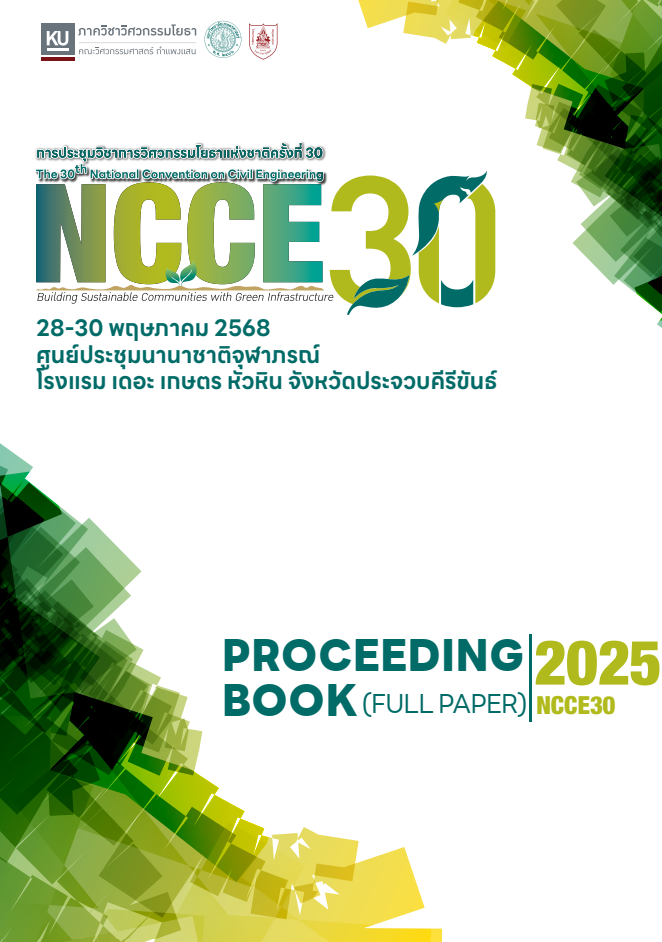Newly Proposed Strain Limit for Designing Concrete Slab-on-Ground Reinforced with GFRP Rebars
คำสำคัญ:
GFRP rebar, slab-on-ground, allowable strain limitบทคัดย่อ
Glass Fiber Reinforced Polymer (GFRP) rebar has been used as an alternative reinforcement in concrete slab-on-ground for years. It has many attractive engineering properties such as high tensile strength, light weight, and rust proof. To design GFRP reinforced slab-on-ground, ACI440.1R-15 suggested that the amount of GFRP rebars should be controlled by a strain limit rather than allowable stress because GFRP rebar has low modulus of elasticity. Currently, the recommended strain limit is based on strain of ordinary steel reinforcement at the steel’s allowable stress. This limit yields a very low allowable stress resulting in uneconomical and uncompetitive design compared to conventional steel rebar. Therefore, a new method to evaluate strain limit is suggested in this study. The newly proposed equation for strain limit is derived based on an acceptable crack width according to ACI440.11-22. By this method, the strain limit can be increased about thirty to sixty-five percent depending on spacing and clear covering of GFRP rebars. With the increased strain limit, the amount of required GFRP rebar can be reduced, which helps lowering the construction cost and makes GFRP rebars to be more competitive.
ดาวน์โหลด
เผยแพร่แล้ว
วิธีการอ้างอิง
ฉบับ
บท
การอนุญาต
ลิขสิทธิ์ (c) 2025 Engineering Institute of Thailand

This work is licensed under a Creative Commons Attribution-NonCommercial-NoDerivatives 4.0 International License.
บทความที่ได้รับคัดเลือกนำเสนอในการประชุม NCCE ถือเป็นลิขสิทธิ์ของวิศวกรรมสถานแห่งประเทศไทย ในพระบรมราชูปถัมภ์ (วสท.) (Engineering Institute of Thailand)


